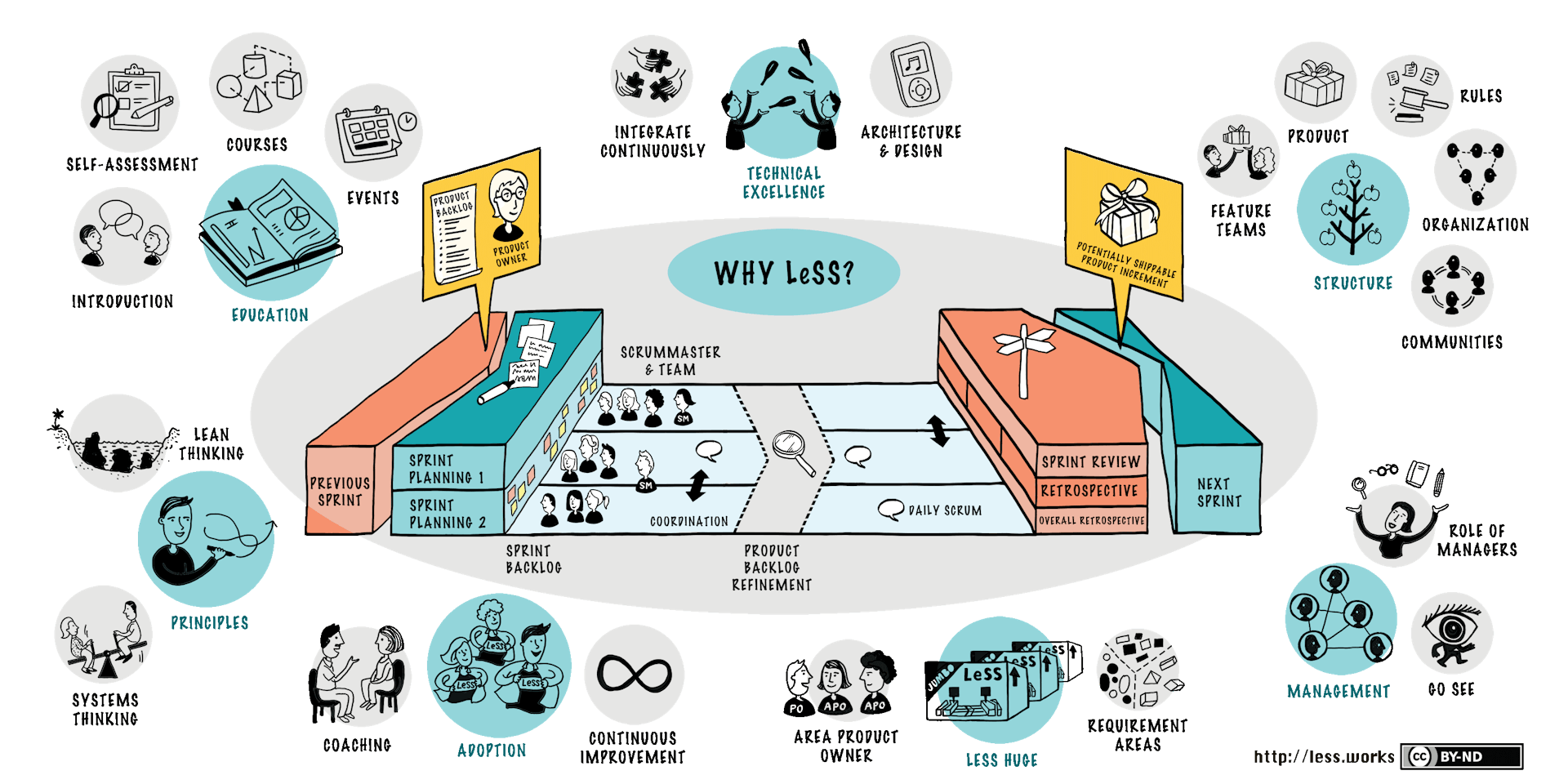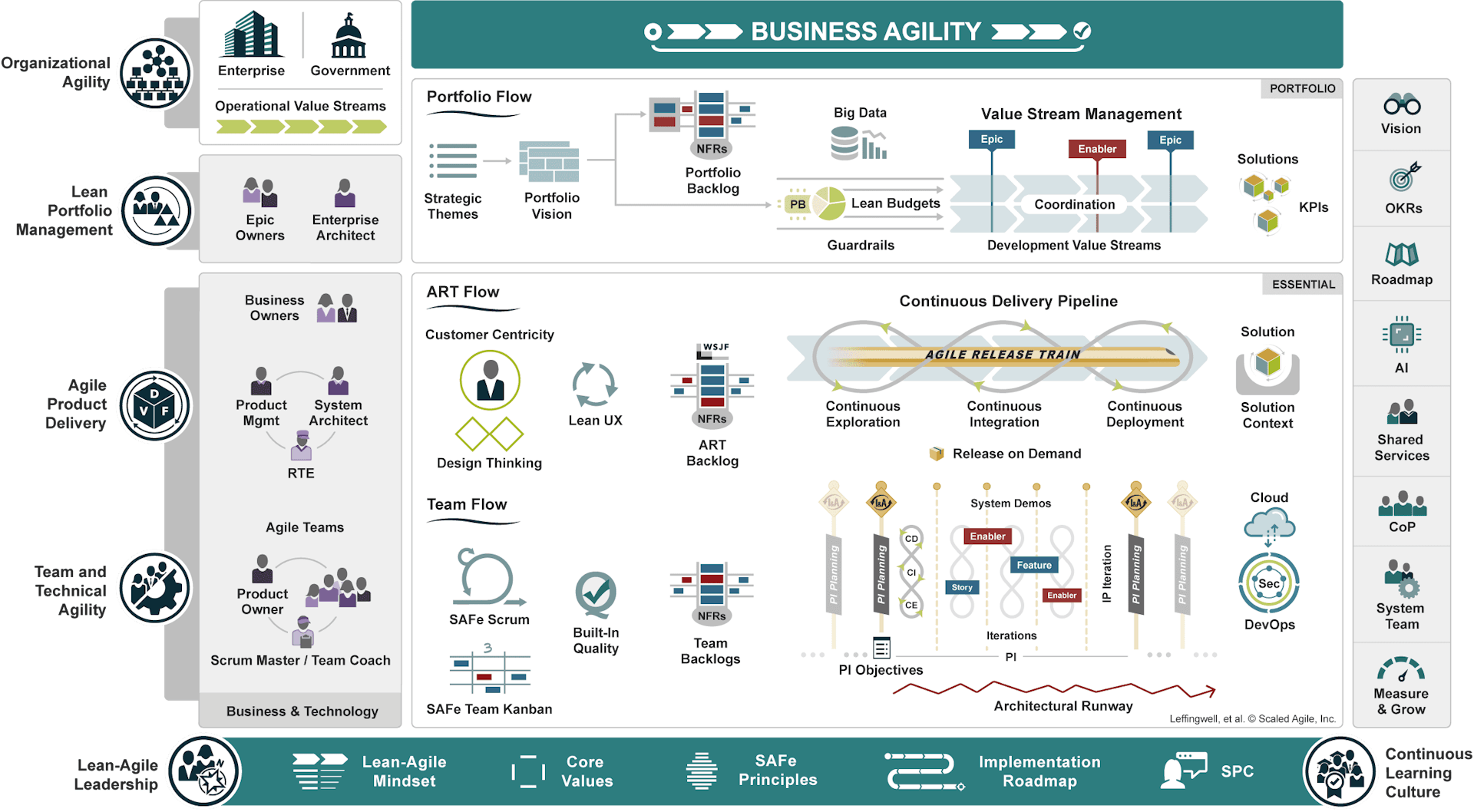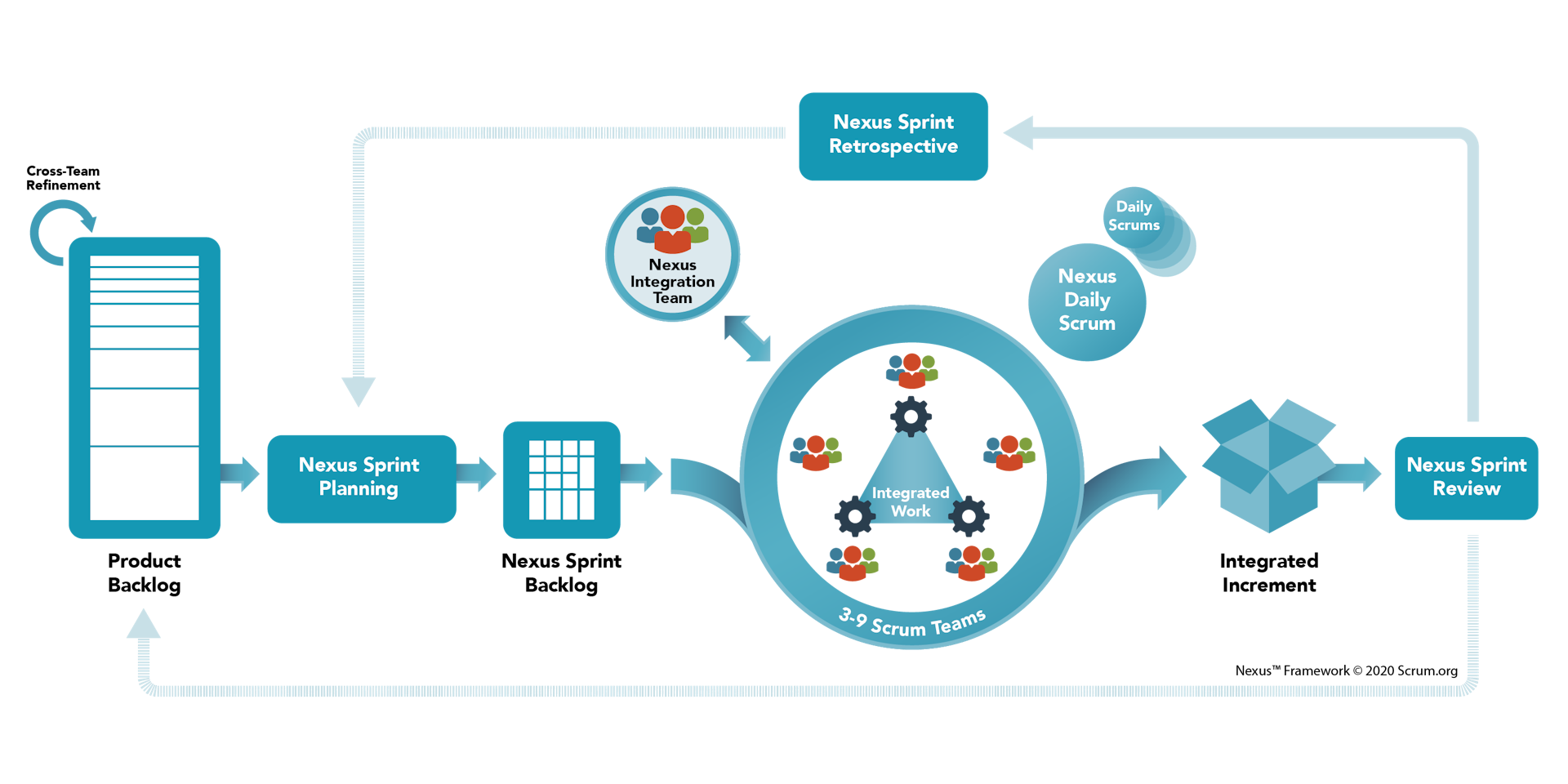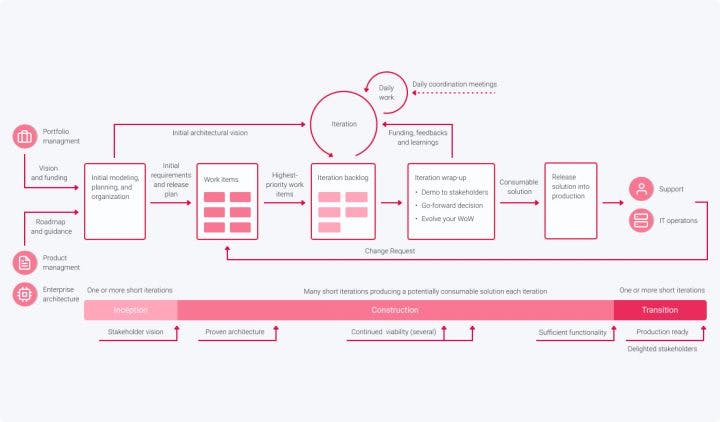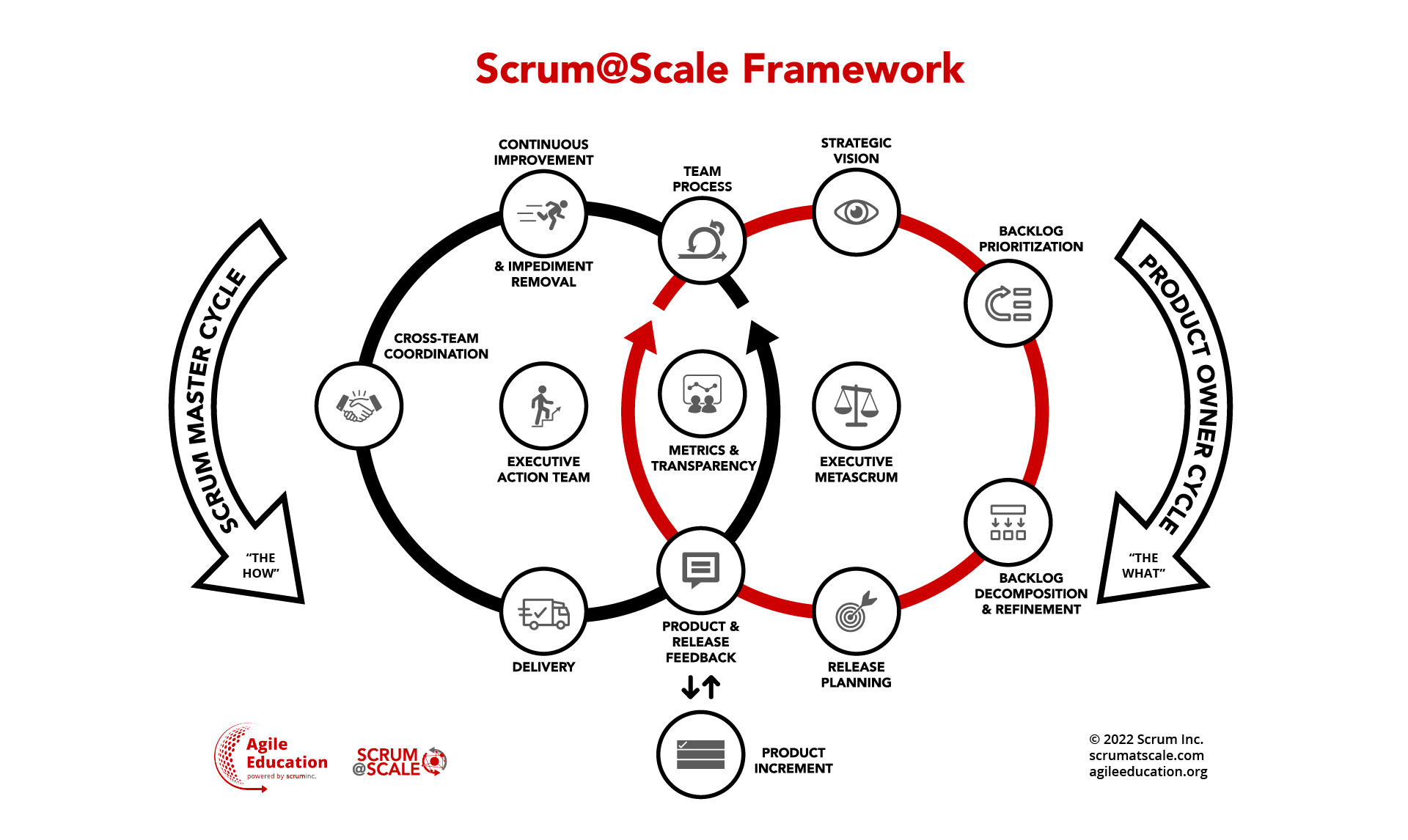
Scaling Scrum: Various approaches and flavors of Scaling Scrum in your organization
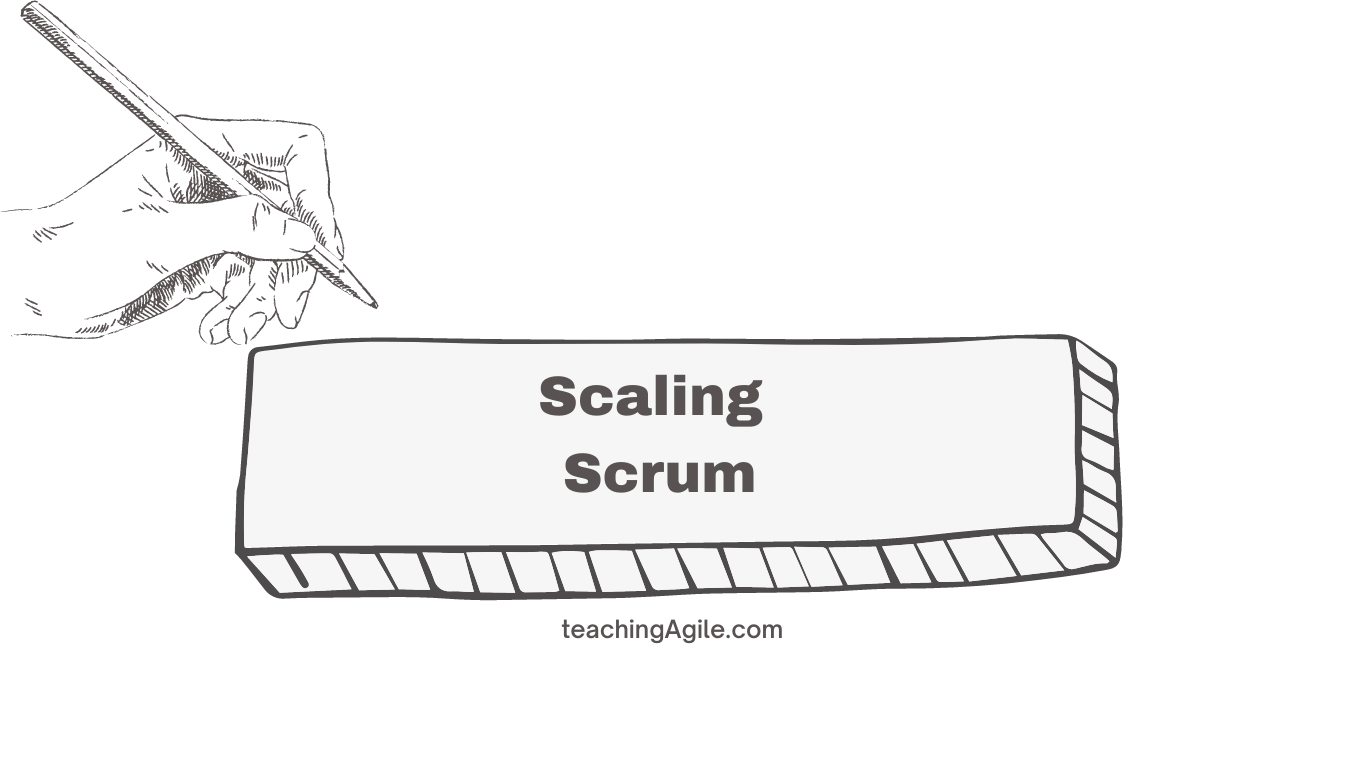 Scaling Scrum: Various approaches and flavors of Scaling Scrum in your organization
Scaling Scrum: Various approaches and flavors of Scaling Scrum in your organization
Scaling Scrum refers to the process of applying Scrum principles and practices to larger, more complex projects or organizational structures.
Originally designed for small, cross-functional teams working on single projects, Scrum's scalability has been tested and proven in larger initiatives.
💡
This expansion is achieved through various scaling frameworks and practices, each tailored to accommodate the growing complexity and size of projects while retaining the core values of Scrum.
The journey of Scaling Scrum involves several key approaches.
The 'Scrum of Scrums' method, for instance, allows multiple teams working on the same project to maintain their individual Scrum practices while coordinating through regular inter-team meetings.
Frameworks like Large-Scale Scrum (LeSS) and the Scaled Agile Framework (SAFe) offer structured methods to scale Scrum to larger organizations, emphasizing simplicity and alignment across teams.
Nexus, developed by Scrum.org, and the Spotify Model, inspired by the organizational practices of Spotify, provide alternative approaches to scaling, focusing on integration and maintaining a culture of autonomy and innovation.
Disciplined Agile Delivery (DAD) offers a more flexible approach, allowing organizations to tailor practices from various sources.
Each of these frameworks shares a common goal: to adapt the agility, transparency, and collaborative spirit of Scrum to larger scales, ensuring that teams can effectively manage larger projects without losing the essence of Agile principles.
Table Of Contents-
Challenges of Scaling Scrum
Scaling Scrum can present various challenges, including:
- Coordination and communication: As the number of teams and individuals increases, communication and coordination can become more complex.
- Consistency in processes: Ensuring consistency in Scrum practices across multiple teams is essential for effective scaling.
- Integration of work: Integrating the work of multiple teams and ensuring a cohesive product Increment can be challenging.
Approaches to Scaling Scrum
There are several well-known approaches to scaling Scrum. Some of the most popular frameworks include:
Scrum of Scrums
Scrum of Scrums is a coordination technique used in Scrum to manage the collaboration and communication between multiple Scrum Teams working on the same product. It enables the scaling of Scrum principles while ensuring alignment and synchronization of efforts across teams.
Key Practices in Scrum of Scrums:
- Daily Meetings: Scrum of Scrums meetings are conducted daily, typically after the individual Scrum Team's Daily Scrum. Each team sends a representative to this meeting.
- Impediment Resolution: Teams discuss impediments that affect their interdependencies and collaborate on solutions.
- Information Sharing: The meeting serves as a platform for sharing critical information, updates, and progress.
- Backlog Alignment: Teams ensure that their individual backlogs align with the overall product backlog, promoting a shared product vision.
LeSS (Large-Scale Scrum)
LeSS (opens in a new tab) is a framework that extends Scrum principles to multiple teams collaborating on a single product. Starting with a single Scrum team, LeSS applies Scrum's principles and goals to large-scale projects through clear guidelines and practices. Its simplicity is its strength, making it accessible and effective for large-scale projects.
LeSS Principles:
- Empirical Process Control
- Transparency
- More with Less
- Whole Product Focus
- Customer-centric
- Continuous Improvement towards Perfection
- Systems Thinking
- Lean Thinking
- Queuing Theory
Framework Structure of LeSS:
- LeSS offers two configurations: Basic LeSS, designed for two to eight teams (10-50 individuals), and LeSS Huge, tailored for more extensive projects involving over eight teams (50-6000+ individuals). Starting with Basic LeSS is recommended to gain experience before venturing into LeSS Huge.
SAFe (Scaled Agile Framework)
SAFe (opens in a new tab) is a comprehensive framework for implementing Agile practices at a large scale. It provides guidance on roles, responsibilities, work management, and core values to support alignment, collaboration, and efficient delivery across numerous Agile teams. SAFe is founded on three key bodies of knowledge: Agile software development, lean product development, and systems thinking.
SAFe Core Values:
- Alignment
- Built-in quality
- Transparency
- Program Execution
- Leadership
Benefits of SAFe Framework:
- Accelerated Time-to-Market: SAFe enhances the ability to respond to customer needs swiftly. By aligning cross-functional Agile teams around value delivery, organizations make quicker decisions, streamline operations, and remain customer-focused.
- Enhanced Quality: Inherent quality is a core SAFe value, emphasizing the integration of quality throughout the development cycle. Scaling Agile with SAFe shifts the focus from last-minute quality checks to a collective responsibility for quality.
Nexus
Nexus (opens in a new tab) is a framework specifically designed by Scrum.org (opens in a new tab) to scale Scrum. It builds upon the Scrum framework and adds additional roles and events to facilitate coordination and integration among multiple Scrum teams. The Nexus Integration Team is responsible for managing dependencies and ensuring a unified product increment.
Nexus comprises a group of 3 to 9 Scrum Teams working collaboratively to deliver a single product. Nexus aims to uphold Scrum's empiricism and bottom-up intelligence while creating an environment where multiple Scrum Teams can collectively deliver value beyond what a single team can achieve.
The Nexus Framework and How it Scales:
- Product Backlog Management: Cross-Team Refinement ensures effective management of the Product Backlog, even when dependencies exist between items. Transparent communication eliminates potential obstacles, and forecasts are made for assigning product backlog items to teams, enhancing preparedness for upcoming Sprints.
- Coordinated Sprint Activities: Nexus Sprint Planning coordinates all work and activities necessary for a Sprint, involving participation from all Nexus members, including Product Owners, Scrum Team members, and representatives. Together, they inspect the refined Product Backlog and set Sprint goals.
The Goal of Nexus Framework
Nexus aims to maximize the value delivered by a group of Scrum Teams working on a single product, reducing complexity and ensuring the delivery of an integrated, meaningful product Increment each Sprint.
Spotify Model
The Spotify Model (opens in a new tab) is a popular approach to Scaling Scrum, often associated with the music streaming service Spotify. It's an organizational framework designed to foster agility, autonomy, and alignment within large organizations. The model emphasizes the creation of "Squads," small cross-functional teams responsible for specific product areas.
Key Features of the Spotify Model:
- Squads: Squads are small, self-organizing teams with a clear mission and ownership of a specific product area.
- Tribes: Squads are grouped into "Tribes," which are larger collections of related squads.
- Chapters: Chapters consist of individuals with similar skills or interests across different squads. They provide a platform for skill development and knowledge sharing.
- Guilds: Guilds are informal communities of practice that allow individuals from different chapters and tribes to come together, share knowledge, and drive improvements.
- Autonomy: The model encourages squads to have a high degree of autonomy in decision-making, fostering a culture of ownership and responsibility.
Disciplined Agile Delivery (DAD)
DAD (opens in a new tab) is a process decision framework that builds on the foundation of agile and lean principles. It provides a straightforward guide to help organizations make informed decisions about their agile and lean strategies. DAD addresses a variety of lifecycles, practices, and roles, making it adaptable to different situations.
Key Principles of DAD:
- Choose Your Wow: DAD emphasizes the importance of choosing the right agile and lean practices based on the unique needs of the project or organization.
- Be Awesome at What You're Good At: DAD recognizes that organizations have strengths and existing practices worth preserving. It encourages leveraging these strengths while continuously improving.
- Context Counts: DAD acknowledges that each situation is unique and encourages teams to consider the context when making process decisions.
- Enterprise Awareness: DAD provides guidance for scaling agile practices at an enterprise level, ensuring alignment with organizational goals.
Scaling in Scrum with Scrum@Scale (S@S)
While Scrum can be applied to individual teams, Scrum@Scale is designed to transform the entire organizational culture by scaling Agile practices across multiple teams and ecosystems.
Scrum@Scale draws from Scrum's fundamental principles and complex adaptive systems theory.
In Scrum@Scale, everyone is part of a Scrum Team, and various Scrum Teams come together to form an ecosystem.
It is a suitable framework for large organizations, offering training and certification options.
Core Concepts of S@S:
- Small Teams: Teams typically consist of three to nine members.
- Scaling Across the Organization: Agile practices are scaled across the entire organization.
- Minimum Viable Bureaucracy: Emphasizing minimal bureaucracy to make decisions and execute them efficiently.
Scrum@Scale Events:
In addition to the standard Scrum events, Scaling Scrum introduces Scaled Daily Scrums, where every team member participates, ensuring alignment and collaboration.
Roles in Scrum@Scale:
In Scrum@Scale, the roles of Product Owner and Scrum Master remain, with similar responsibilities. The framework introduces new roles like Chief Product Owner (CPO) and Scrum of Scrums Master (SoSM) to facilitate coordination and alignment.
Conclusion
Scaling Scrum is essential for organizations aiming to navigate the challenges of large-scale product development.
While SAFe, LeSS, and Scrum@Scale offer structured frameworks, other approaches like Disciplined Agile Delivery, the Spotify Model, and Scrum of Scrums provide additional options. Understanding the principles and benefits of these approaches is crucial for organizations seeking to tailor their agile scaling strategy to their specific needs and contexts.
